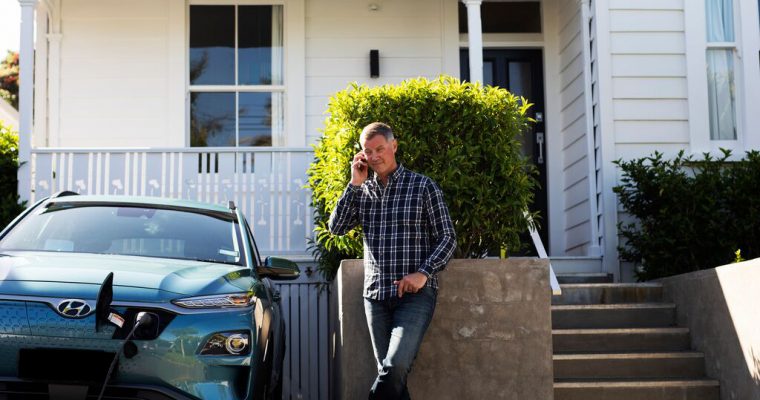
How ready are Australian drivers for EVs compared to the rest of the world?
For your fleetIn our latest Mobility Insights Report, we conducted a survey across 22 countries on driver attitudes and opinions on EVs and sustainability.
As well as taking the temperature of respondents across the EU, UK and US, the survey included input from Australian and New Zealand drivers, which unearthed some important findings.
The global snapshot
The popularity of EVs is increasing – that’s indisputable. 65% of respondents in the survey indicated they viewed zero-emission electric driving positively. Interestingly, 44% of respondents said their opinion towards electric driving has favourably improved over the past three years.
Furthermore, the increasing change in consumer attitudes towards EVs is likely to push demand for EVs. The report found that 61% of drivers who plan on leasing a vehicle in the next five years will consider an EV.
Despite the majority support for EVs as revealed in this report, a number of concerns from drivers were unearthed, which explains a possible disconnect between popularity and sales.
Although the EU and the US have many incentives for purchasers of EVs and hard deadlines for phasing out the sale of combustion engines, the main hurdle for a majority of respondents in switching to zero-emission cars (57%) was the “prohibitively high purchase price”. Additionally, 35% of the people planning to buy or lease an EV in the next five years cited “insufficient charging infrastructure” as a red flag for switching, while limited driving range – or so-called ‘range anxiety‘ – was the reason another 34% said they would not go electric.
The Australian perspective
Behyad Jafari is CEO of the Electric Vehicle Council of Australia, the body representing the electrical vehicle industry at a national level. When discussing the findings of LeasePlan’s global survey with Behyad, he was not surprised by the numbers, which he believes highlight the complexities of the EV market in Australia that continue to slow sales and infrastructure spending.
According to Behyad, overcoming these complexities comes down to government support for EVs. With greater government support helping to reduce the driveaway cost of an EV, greater pressure will be placed on manufacturers to offer more choice for consumers on the showroom floor and, with more EVs on the road, the demand for infrastructure spending can then be justified.
The Electric Vehicle Council’s Australian sales numbers provide some clear reading. Six-thousand nine-hundred electric vehicles were sold in 2020, accounting for just 0.75% of all cars sold in Australia. Compare that to the UK, where EVs account for more than 10% of total car sales (with EVs comprising an average of 4.5% of global sales) and it’s evident that Australia lags significantly behind.
“We know from multiple surveys from groups like us, LeasePlan, and market research companies that consumers are very excited about electric vehicles in Australia,” says Behyad. “We see that anywhere from 55 to 85% of consumers will now say, ‘If an electric vehicle that was suitable for me and in the right price range, I would want it to be my next car‘. And that’s been the case for many years now. The place where we fall short, unfortunately, is what governments are doing, and what that means for market uptake in this early period.”
“The explanation for why is quite simple,” he continues. “In markets, particularly in developed countries, governments have regulations that require companies to sell electric vehicles. They provide tax breaks and other incentives to encourage consumers to buy them. Australia doesn’t have those things in place, so the business case doesn’t stack up for manufacturers.”
Somebody has to invest in bringing EVs to our market.
“Somebody has to invest in bringing EVs to our market. And that’s a multi–million-dollar investment to make, to bring a car here, get it certified, take it through safety testing… all of those types of things that you have to do. It’s an expensive enterprise and it’s an expensive risk to take. If someone doesn’t do that part, it doesn’t matter if electric vehicles get cheaper, somebody has to bring them here.“
“Manufacturers are asking themselves why, in such a competitive space, they should take vehicles away from other markets? Why should we take vehicles away from markets that are doing more and send them to Australia where they’re doing nothing?”
Behyad observes that it is critical, particularly in this early stage of EV adoption, for governments to help kickstart the market.
“We know for sure what works. Government incentives have worked here in Australia for solar panels, as an example, and it’s worked everywhere else in the world for electric vehicles. The government has to do the work and they have to spend the money. To date, there’s been a reluctance [to invest] and they’re hoping that they can get away with not doing it and see what happens.”
Behyad’s passionate belief is that a concerted partnership is a way forward.
“It’s really important to recognise that doing nothing is a choice; doing nothing has an impact. And importantly, doing nothing is not the status quo – Australia is an aberration by doing nothing about this. Shifts that occur take a partnership between industry, consumers and governments. Industry and consumers are at the table, governments are missing, and governments are meant to be the consumer’s representative in this space.”
To find out more about EVs in Australia and across the globe, download a copy of LeasePlan’s Mobility Insights Report.
 Driving Insights
Driving Insights
